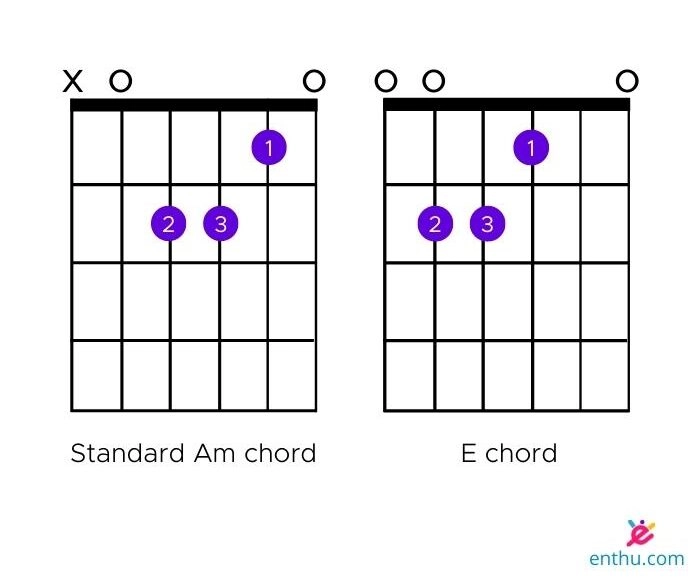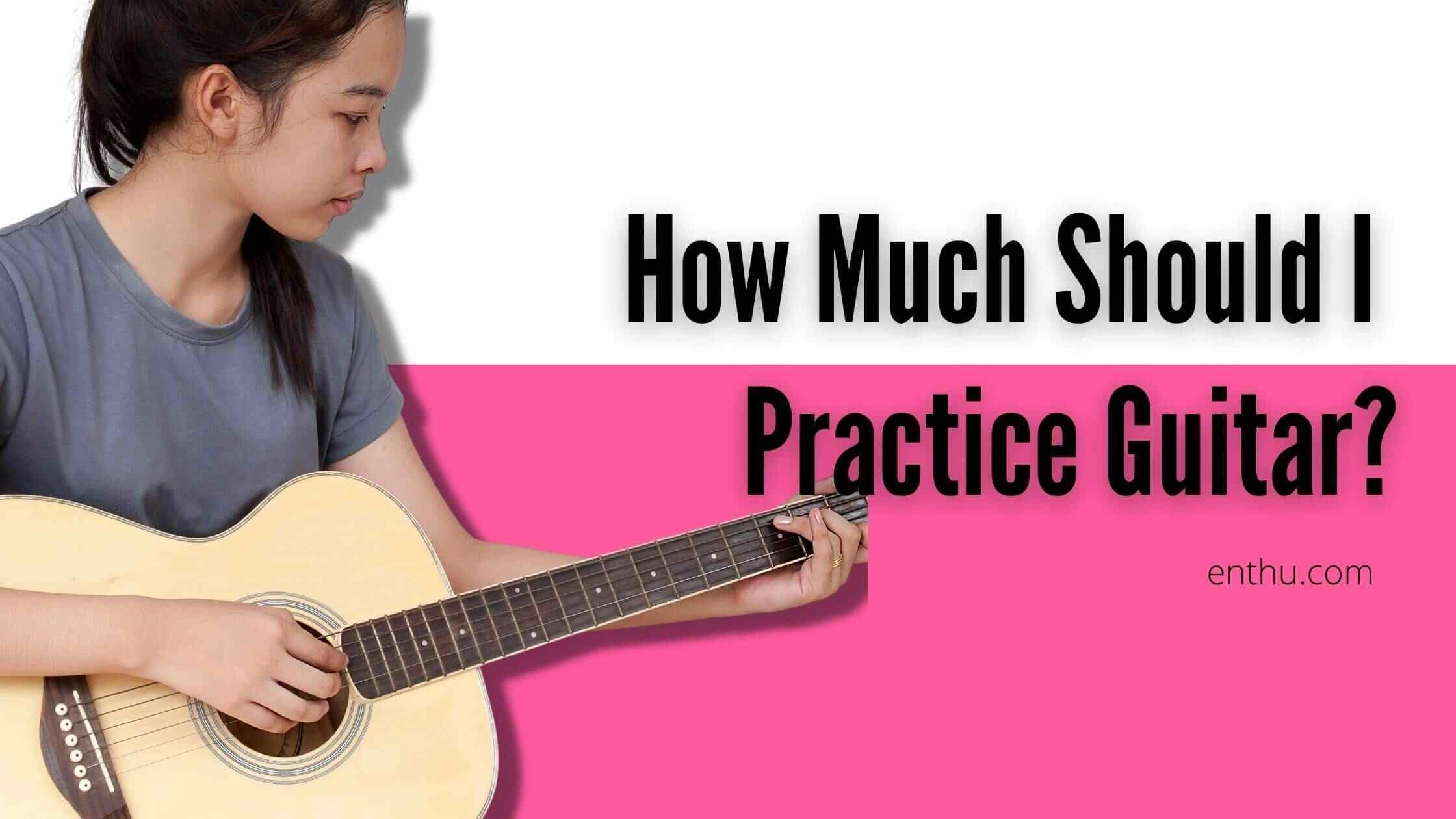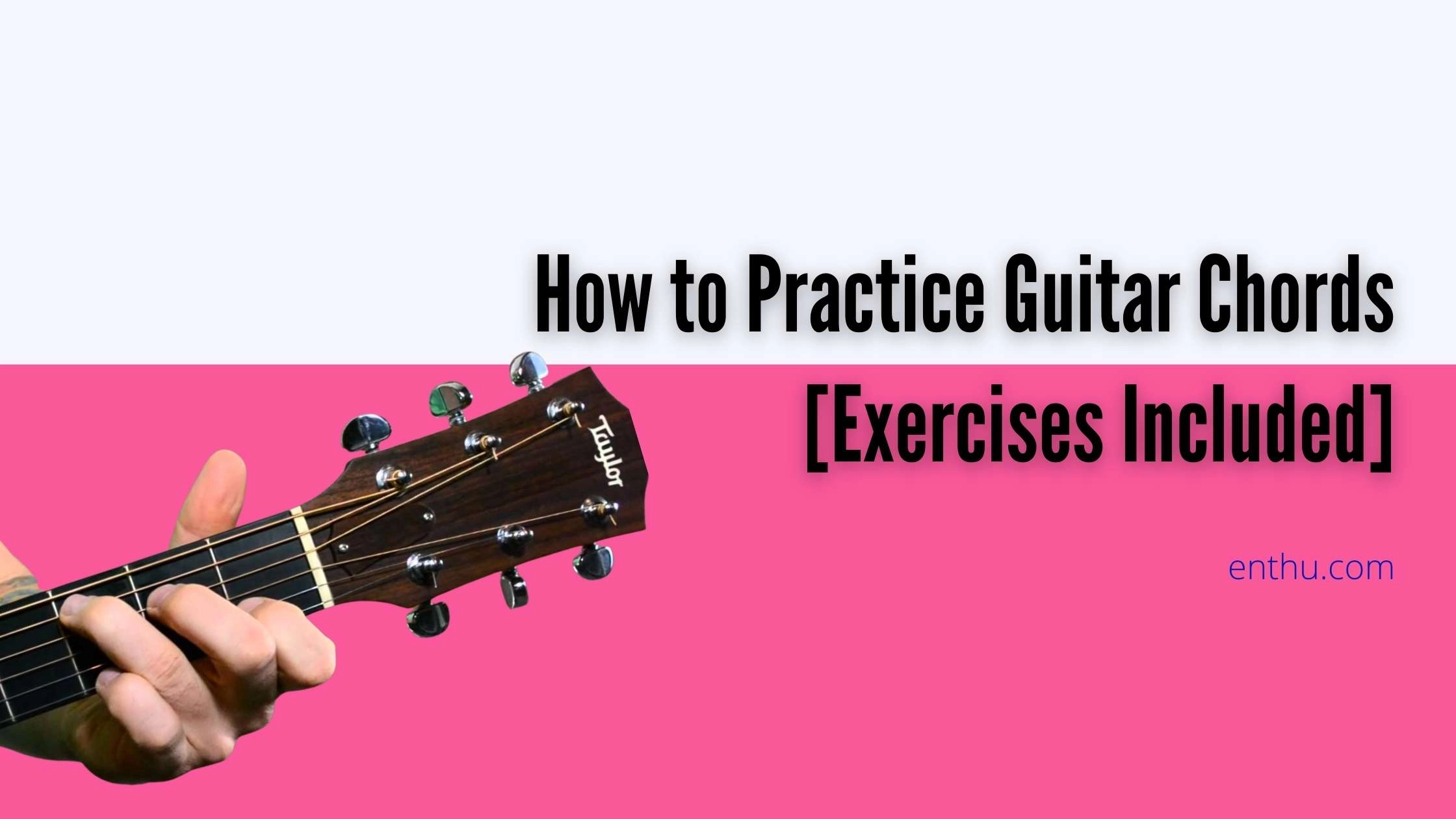Do you dream of playing guitar like Jimi Hendrix one day? Undoubtedly, you can dear reader. Becoming a pro guitarist is not rocket science. It takes practice and dedication. Jimi Hendrix didn't become an influential electric guitarist overnight.
He used to practice daily for hours, watching and listening to experienced guitarists. All the famous guitarists you know include exercises in their practice routine. No, not physical exercises like squats, but exercises on how to practice guitar chords, finger exercises etc.
These exercises will also help you to sing and play along simultaneously. You can follow any method to learn guitar chords, or buy an essential beginner guide to playing guitar.
But, I will strongly recommend you follow these 5 exercises regularly to get better at playing guitar chords. In this guide, you will learn:
Tips to practice guitar chords
Exercises to practice guitar chords
Tips to Practice Guitar Chords
Knowing a chord is not enough. Knowing the right technique is more important. Using the correct technique makes the chord sound apt and soothing. I know it's not as easy as it sounds. For that, you need to follow the process. Let me help you with that.
1. Memorize the Chord Shapes
Memorizing each chord is difficult. Remembering chord shapes is easier and the right way to play the chords without much hustle. Practice chord diagrams to remember chord shapes. Try to play them smoothly on the fret board. Once you know the chord shapes, you will get good at chords.
2. Work on Individual Chords
I know, learning guitar is fun. But in that excitement and rush, do not start playing multiple chords without mastering the right technique. Work on one chord at a time. Get familiar with the chord structure and sound. Once you learn one chord perfectly, you can easily learn the others
3. Chord Transitions
Once you have mastered the chords individually, start practicing chord transitions. Play the chords alternatively. Groove around them. For example, if you are switching from Gm to Am, track the time you take in transitioning two chords.
Also, see if you are putting the proper pressure on the strings and creating a perfect sound. Try the same using barre chords. You can go with capo to play barre chords. As an advanced guitarist, I have applied these techniques, and I want them to work for you as well.
Try them out and you will be glad about your improvements. To become a pro guitarist, these techniques alone are not enough. In addition to these, you must exercise to practice guitar chords.
Exercises help achieve dexterity and play guitar smoothly. Moreover, these exercises are essential and effective for everyone, from a new learner to an advanced guitar player.
How to Practice Guitar Chords
5 Step-by-Step Exercises Practice these exercises regularly whether you are a beginner or an advanced guitarist. These are nothing but a routine that will be helpful for you in the long run. Let's start one by one with exercises to practice guitar chord.
Exercise 1
Use Fingertips to Play the Chords This is one of the slightly ignored yet essential fundamentals of playing guitar chords. The reason I included this as an exercise is, beginners don't really focus on their fingertips while holding the strings.
They are so curious to obtain that one chord shape and ace it. The main problem occurs when this becomes habitual. It's ok if you are one of them. You can restart and get better.
Steps
Place your fingertips appropriately on the strings.
Make sure you are not placing finger pad.
Ensure placing the fingers without touching the adjacent strings.
Put the correct pressure using your fingertips.
Now play the chord.
Protecting your fingertips is very important as they are the core part you use while playing the guitar. They are the reason you get to hear the best sound. The pressure you put on your fingertips changes the way a chord sounds.
Wrong pressure can lead to buzzing. Placing a finger pad doesn't create a good sound and ultimately screws up the chord.
So, practice the chord shapes using your fingertips. This way, you can produce the correct sound through chords.
Exercise 2
Slowly Move the Chord Shapes Once you are comfortable using your fingertips, you develop a command over your fingers. You can play several open chords easily. But you need to be slow when you want to experiment with chord transitions.
Steps
Take 2 chord shapes. Let's take Am chord and E Major chord as an example, as both these chords have similar shapes.
Start with one chord, for example, Am chord. Place the fingertips according to the chord.
Start playing the chord with a strumming pattern, say, Down Down Up, Down Down Up.
Once you are comfortable with Am, move the chord shape slowly and play the next chord, E.
Now, this is an important step. Try playing both the chords alternatively. Don't stop strumming.
Keep going.

See, you don't have to be a racing horse. Be slow. Don't think about how much time you need to invest in the slow chord moves. This gradual playing exercise is going to make your techniques perfect.
Now that you know the steady way of switching the chords, try playing them a little faster. Pick some different chords and experiment.
Exercise 3
Play Chords with Metronome In the previous exercise, you learned about slow chord moves. This exercise is about playing the chords by changing speed. The metronome can track dexterity while playing the chords.
Steps
Start with a slow tempo and play a chord.
Once you are settled, increase the tempo and play the same chord.
Now, bring the twist and play two chords one by one, with increased bpm.
Regular practice with a metronome will not let you forget any chord shapes. Because you stay and play at a specific tempo. This develops patience and rhythmic consciousness.
You can download the Metronome app or a google search can help you get the tool. It's an enjoyable way of practicing and mastering chords. Wondering how much should you practice Guitar?

Exercise 4
Play the Chords Without Stopping Strumming Usually, while learning chords, we focus more on the chords than the strumming pattern. But as you are a step ahead, make sure you are doing this exercise to practice guitar chords.
Steps
Hold the strings with a chord shape you want to play.
First, get comfortable with it. Check if you are holding the strings with your fingertips.
Now, take any strumming pattern and play the chord.
Do not stop the strumming even if you are not playing it flawlessly. Continue holding the chord and strum the strings.
Try changing the chords back and forth without stopping the strumming.
This exercise lets you learn the technique of playing songs continuously without breaking continuity. The chords are what you need in song formation with guitar.
So, learn a few basic strumming patterns for this routine. Practicing this warm-up exercise develops a good habit of strumming, and you don't need to remember to strum the strings while playing the chords.
Exercise 5 - Finger Exercises
Finger exercises are crucial when you are learning an instrument. You must bookmark them, especially when you are learning guitar. Because guitar chords involve motion. You play them simultaneously while creating songs. So, for that purpose, these exercises are a must.
Finger exercises are crucial when you are learning an instrument. You must bookmark them, especially when you are learning guitar. Because guitar chords involve motion. You play them simultaneously while creating songs. So, for that purpose, these exercises are a must.
Few Finger Exercises
To play chords smoothly, you must have a grip over individual notes. So, playing notes from ascending to descending order and vice versa, is a fantastic exercise. You can practice scales as well.
The 1 2 3 4 exercise is like a warm-up to get better at chords. You use each finger during this exercise. By that mean, you allot the first finger (Index) to the note presented on the first fret, 2nd finger (Middle) for the 2nd fret note, 3rd finger (Ring) for the 3rd fret note, and 4th finger (Pinky) for the note on 4th fret.
Here, your fingers get a good stretch, leading to flexible chording. All these exercises are super easy and not at all time-consuming. Even if you allot 15-20 minutes daily to practice, you can play guitar chords without difficulty. You can also practice chord progressions as an exercise. The exercises are fundamentals for a great foundation of guitar skills.


Conclusion
You might be thinking about how to practice all these exercises daily. Again, start with one exercise. However, all of these are complementary exercises. So, I would suggest not to miss any of them. Exercises play a vital role when you play the chords. Exactly how?
With finger independence
Minimizing unnecessary movements
Minimizing pressure on the strings Therefore, make these exercises a part of your routine so that you can practice the guitar chords and get better with muscle memory. Guidance is all you need to learn the skill efficiently. You can
Therefore, make these exercises a part of your routine so that you can practice the guitar chords and get better with muscle memory. Guidance is all you need to learn the skill efficiently. You can enroll in a class and learn under an expert.
But, these exercises are going to help you at every skill level. So, practice them and improve your chord skills, to get applause on your favorite song!
FAQs
1. How can I make guitar chords more effective?
Consistent practice can help you in developing effective guitar chord skills. Besides that, setting up a routine can work best. Including this, practicing some basic finger exercises relaxes your muscles, and you can effectively play the chords.
2. How do I memorize guitar chords?
To memorize chords, the best way is to repeat a chord you have learned, before moving ahead with a new chord. Also, practicing chord shapes is another excellent way to memorize chords.
3. Can I Learn Guitar Chords By Myself?
Yes. You can learn guitar chords by yourself unless you know you're learning them the right way. Now, there are plenty of platforms like YouTube where you can quickly get all the information you need.
Initially, it might seem hard to learn the chords on your own. But gradually with practice, you can surely learn them.





Comments